St Mary's Bay and Sharkham Point Revisited
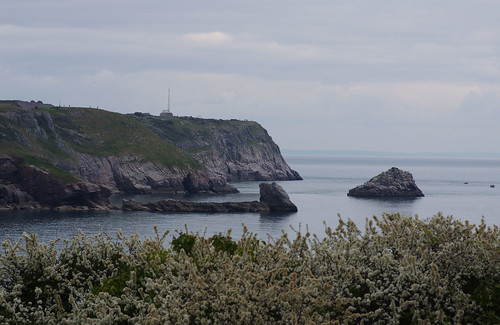
A view of Berry Head and Durl Rock.
Having a camera and being able to review the things you see is invaluable. But it is not the same as actually being there. You could take consecutive images of the same spot over successive years and be hard-pressed to tell them apart. Out in the field it's a different story altogether. I can't rely on memory-power to familiarise myself with the surroundings. What goes in soon leaks out like a sieve. Sometimes I have trouble remembering what I did yesterday, never mind this time last year.
By the first path past the holiday camp at the end of Mudstone Lane everything feels different. How long has it been? I don't remember. What was here then? Ditto.
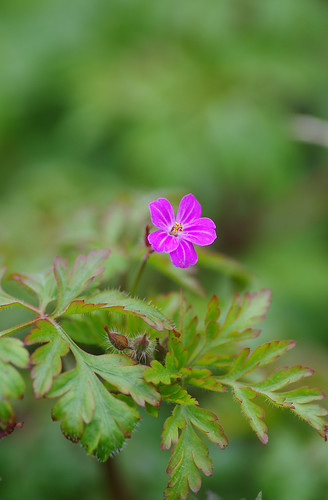
Herb Robert (Geranium robertianum)
These flowers are everywhere at the moment. Their roots spread like wildfire - expanding and solidyfying networks. They're in our garden, front and back. Once in a while, I rip them out to stop them getting a stranglehold over everything else but it's by no means a regular clearance.
I have an uneasy relationship with gardening. I have to put myself in the right frame of mind and I'm afriad this only happens very rarely. And the longer I leave it, the higher the mental obstacle I have to overcome. As consolation, I tell myself that the house sparrows appreciate our unkempt jungle more than they would any manicured lawn. They see it as a game., always finding new places to raid the larder.

Nursery Web Spider (Pisaura mirabilis)
This spider was perfectly poised for something small and juicy to offer lunch. As the undergrowth becomes more rich and varied, so the leaves are bustling and bristling with things that crawl or hide or even camouflage themselves. I wonder how much we miss as we try to be eagle-eyed. Often, I suspect the new species we are looking for could be right under our noses.
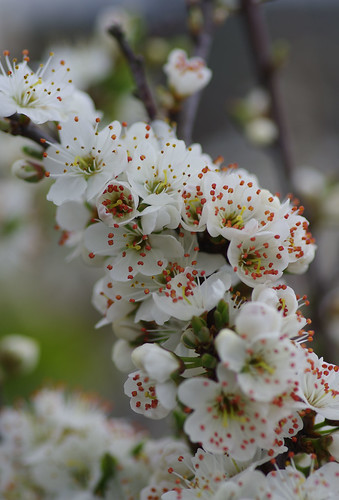
Damson blossom
At first I thought I was looking at the blossom of the hawthorn tree. But the flowers above were less papery and delicate. They have their stamens out like antennae to attract the pollinators.

Tachinid fly on the flowers of Alexanders
If you look closely you might be able to see what must be pollen on the fly's compound eyes. I wonder how dramatically its vision was affected. How little we know about how each and every creature lives! And some of the advances in knowledge that have been made appear dubious. How was it measured that dogs can only see in black and white. Speaking of which...
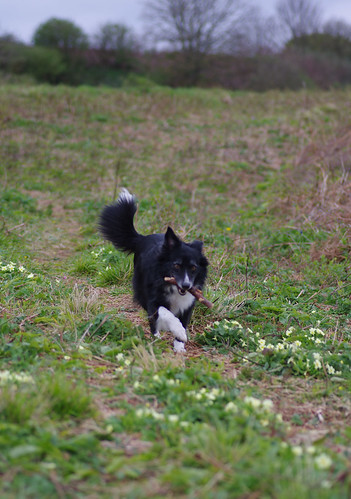
Me and my stick
The Lady trotting along quite merrily en route to Sharkham Point. At this point we had gone off the main path to do some exploring. The bracken has recently been cleared from this area, letting more light in and encouraging the spring flowers to take up the space. It's easy to forget how much conservation a given area needs to keep an area in balance. And how much species of all shapes and sizes rely on our intervention to thrive or, at best, survive.

We saw this caterpillar munching its way through a flower. In our excitement to identify the caterpillar, objectivity went right out of the window and we forgot all about the flower. It must be either a buttercup or celandine. The caterpillar had pink legs but we still could not find one exactly like it anywhere in the field guides at home. Sometimes species can be identified by their foodplant. This is an area where even the experts have gaps in their knowledge to be filled. The likelihood is that there are species eating plants not any list. And who's to say that every caterpillar of a given species will eat the same things. What if their tastes vary as much as ours do?
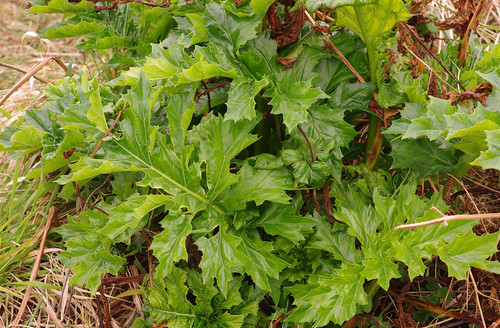
These big, glossy green leaves were just off the path as we headed back along the main path. I have seen them growing in gardens before but never in the wild. Many plants are termed 'garden escapees' and take to different surroundings like ducks to water, threatening the fragile balance of an ecosystem. I wonder if the leaves above will have flowers later in the year or bear fruit. We will have to return soon to see if there are any developments.
UPDATE I have since discovered that these glossy green leaves belong to Bear's-breech flowers.
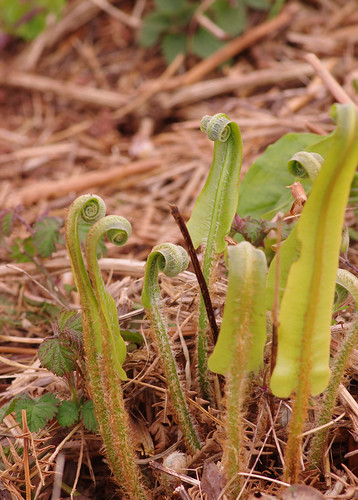
Hart's-tongue ferns (Phyllitis scolopendrigum)
These ferns stood in a close-knit group and put me in mind of a cabal of Roman senators conspiring against absent rivals.
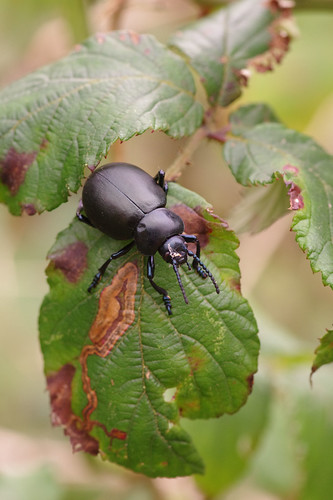

Bloody-nosed Beetle (Timarcha tenebricosa)
It's a golden rule (often stated in wildlife programmes set in exotic locations) to never intervene. Always let nature takes its course, or so the saying goes. However on earth this beetle got on the bramble leaves, it wanted, more than anything, to get off. We watched its titanic struggle and immersed ourselves in the drama for a couple of minutes. Then Sherry decided enough was enough and moved it to the relative safety of the hedge at ground level. It was only later, while researching beetle species that I discovered why the Bloody-nosed Beetle is so-called, Apparently, when threatened, the beetle secretes a blood-coloured liquid from its mouth to scare any potential predators. The beetle above did not do this while it was being moved so we can only assume it was happy to be helped.

There was also this mystery tree next to the coast path. I have yet to find out what it is. Cue more head-scratching...

Comments
Add a Comment